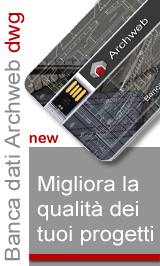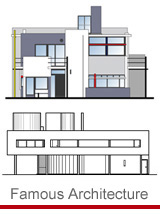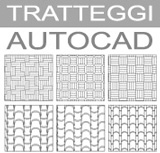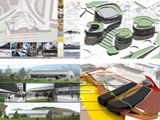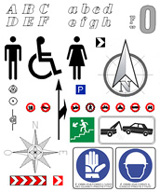|
|
|
|
 |
|
Daniel
Libeskind |
|
|
|
The Denver Art Museum |
|
The new building for the Denver Art Museum
will be an icon whose character and form will attract a wide public to
the museum complex. Nexus is conceived in close connection with the
function and aesthetic of the existing Ponti museum as well as the
entire Civic Center and the public library. The new building is a Nexus
tying together downtown and civic center forming a strong connection to
the golden triangle neighborhood. The project is not designed as a stand
alone building but as part of a composition of public spaces, monuments
and gateways in this developing part of the city, contributing to the
synergy amongst neighbors large and intimate. |
|
|
 |
|
|
|
|
|
|
The materials of the building and plaza will
be those closely relating to the existing context (local stone) as well
as innovative new materials (titanium) which together will form spaces
that connect local Denver tradition to the 21st Century.
The amazing vitality and growth of Denver from its foundation to the
present inspires the form of new museum. Coupled with the magnificent
topography with its breathtaking views of the sky and the Rocky
Mountains, the dialogue between the boldness of construction and the
romanticism of the landscape create a unique place in the world. The
bold and forward looking engagement of the public in forging its own
cultural, urban and spirited destiny is something that would strike
anyone upon touching the soil of Colorado.
One of the challenges of building the Denver Art Museum is to work
closely and respond to the extraordinary range of transformations in
light, coloration, atmospheric effects, temperature and weather
conditions unique to this city. I insist these are to be integrated not
only functionally and physically, but culturally and experientially for
the benefit of the visitors' experience. The conjunction of the
contemporary art experience with the uniqueness of the local conditions
will form part of the decisions of materials, form, and space.
The community has a great role in participating in the creation of the
new Denver Art Museum, though the architect has to take full
responsibility for the work, the public's inclusion is integral to the
building's success. I believe in the importance of the debate and
discourse the project will generate as part of its mission to extend
public participation in the museum. Although no symphony or work of art
has been composed by committee, the open public context of a work has
always been important for its successful completion.
The spatial spectrum of the museum will choreograph public experience
for the visitors greater than the sum of its parts. The visitor
experience will begin before actually entering the building proper
because the building is conceived as a spectacular urban form within the
center of the horizon of the city. The flow of public circulation will
therefore be a full three dimensional exploration of the topography of
place, time and the unexpected.
The 21st century is a century in which the experience of visitors and
the museum itself will be radically rethought. The old barriers between
tradition and the future will be dissolved and reformulated in a new
architectural program. The ecological issues and the role of
architecture in fostering a creative relationship to its environment
will be explored in the way the building is conceived and constructed.
The issues of light and systems within the building will have to relate
to the variety of museum experience. Since the new museum is not thought
of as an abstraction, but as a place for the diverse desires of the
public, it will use the latest technologies and fuse them into an
integrated whole.
Since contemporary art has so much richness and such a wide horizon of
unpredictability one of the missions of the museum is to provide
inspiring and generative space for new art. This space will range from
the black and white box galleries to radical spaces in which both
intimate dreams and grand installations will take place. The
contemporary nature of galleries in the new building will also deal with
the indeterminate and ever surprising and challenging horizon of art by
providing new opportunities for artists to conceive and implement their
wildest dreams.
The Ponti building is a powerful building conceived by a remarkable
architect in his time. The new building for the Denver Art Museum will
provide the necessary tension to further engage the existing museum in
an urban dialogue into the future. The new building will centralize the
lobbies and social activity spaces and functional connections as a
singular new entrance to the complex as a whole. It will also provide a
seamless link and thus transform the public perception of the Ponti
building. The whole is not conceived as merely adding an additional
building to the museum, but generating a new complex in which the Ponti
building plays a major regenerative role. The new place created for the
Denver Art Museum will generate a wholly new audience added to the
audience already involved in the art experience. It will do so by
providing experiences that will be unique to this museum making it a
destination point not only for visitors from Denver, but from around the
world.
The new building is not based on an idea of style or the rehashing of
ready-made ideas or external shape because its architecture does not
separate the inside from the outside or provide a pretty facade behind
which a typical experience exists, rather this architecture has an
organic connection to the public at large and to those aspects of
experience that are also intellectual, emotional, and sensual. The
integration of these dimensions for the enjoyment and edification of the
public is achieved in a building that respects the hand-crafted nature
of architecture and its immediate communication from the hand to the eye
to the mind. After all, the language of architecture beyond words
themselves are the laughter of light, proportion and materiality. |
|
|
|
Daniel Libeskind |
|
|
competition:2000
/ completion: Early 2006
opening: Fall 2006 |
Structure: Steel strucuture on
concrete with titanium and granite cladding. |
| |
|
Address:
DENVER ART MUSEUM
100, West 14th Avenue Parkway
Denver, CO 80204-2788 Tel.: +1 720 865 5000 |
Services provided: Complete
architectural services from inception to completion. Lighting design.
Design of all permanent vitrines and furniture. |
| |
|
|
Client: Denver Art Museum, City of
Denver |
Building Cost: USD 46 million
|
| |
|
|
Technical Details: Net Area:
16,300 sq.m.(163,000 sq.ft.) |
Budget: USD 62.5 million
|
| |
|
|
Gross Area: 18,000 sq.m.(180,000
sq.ft.) |
Credits:
Joint Venture: Davis
Partnership |
| |
|
|
Structural Engineers: Arup
|
Website:
http://www.denverartmuseum.org |
|
|
|
 |
|
 |
|
|
|

